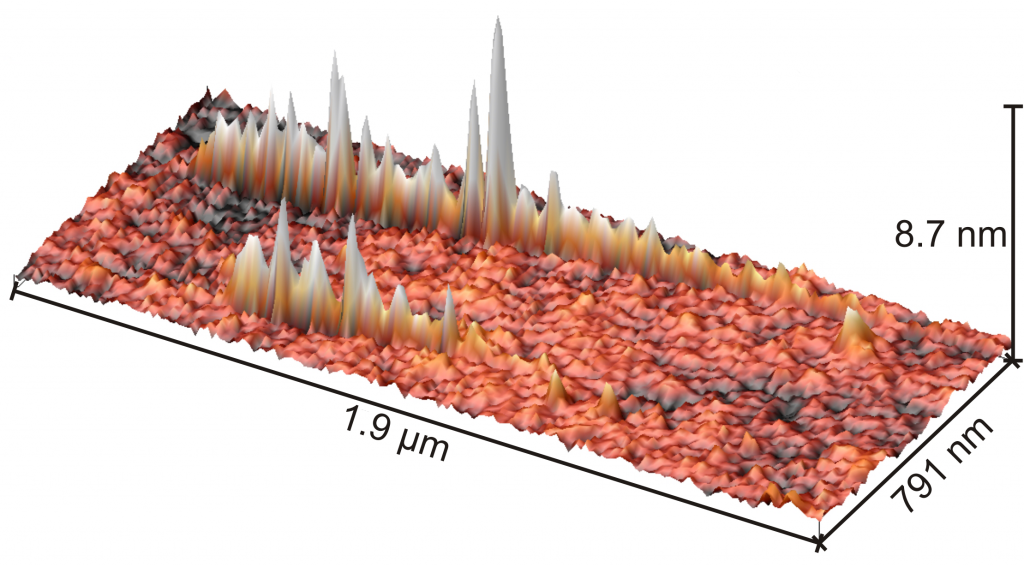Though the mechanistic understanding of cell-surface interaction is in its infancy, it is increasingly recognised that mimicking the physical cues from the native extracellular matrix can be exploited to modulate the cell response to biomaterials.Effective mimicry of the extracellular niche, however, requires control over the size order and spacing of features, posing a challenge for reproduction on translatable scales. To create nanostructured surfaces that can be scaled to large, clinically relevant sizes, we use a novel approach of high-energy grazing ion bombardment. The extremely local (~10 nm3) nature of the energy deposition in the high-energy regime leads to the creation of nanosized dots, or ‘hillocks’, on a surface. At a low angle to the surface a single ion strike creates a chain of equally spaced dots, each separated by a few tens of nanometres. Using a few mm2 beam of ions, large areas (several tens of cm2) can be modified in short times (few seconds). We have found that these surface structures can modulate stem cell response, driving differentiation towards bone or cartilage, depending on the patterns used, without requiring external chemical signalling.
